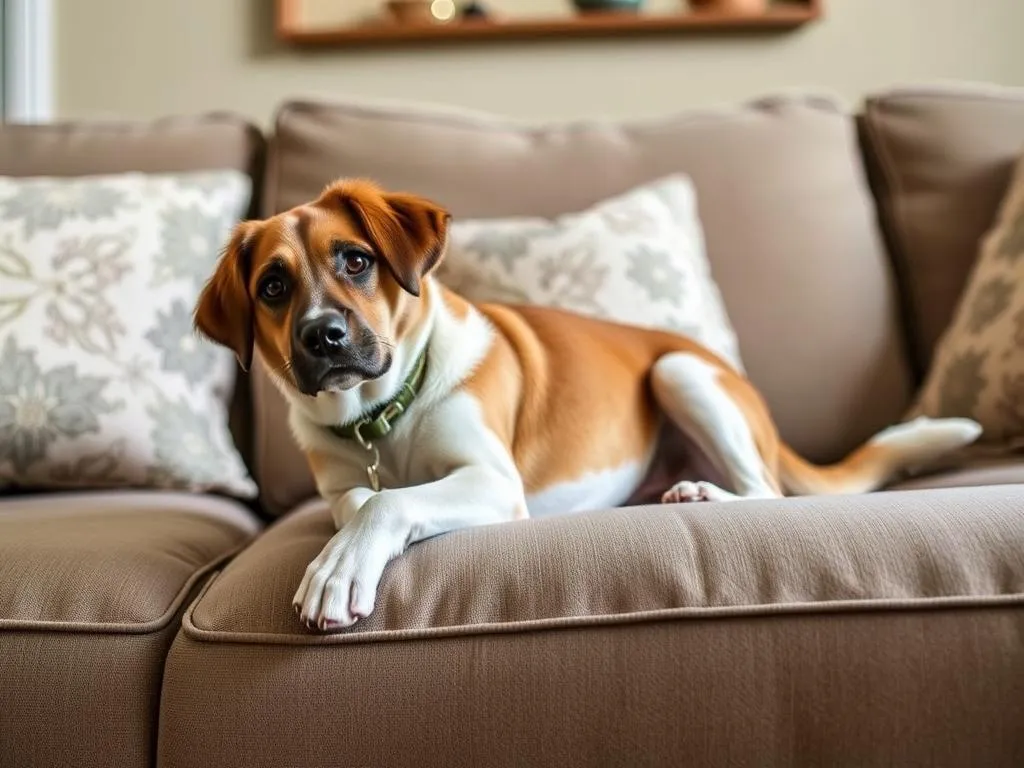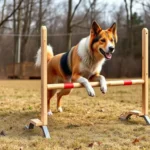
Introduction
Training your dog to stay off furniture is an essential part of establishing a harmonious household. Many pet owners face the challenge of dogs that love to jump onto couches, beds, and chairs. Understanding how to keep your dog off furniture not only preserves your belongings but also promotes better hygiene and reinforces boundaries that benefit both you and your furry companion.
Dogs often seek the comfort and warmth of furniture, craving attention from their owners or acting on instinctual behaviors tied to their pack mentality. However, allowing them on furniture can lead to unwanted behaviors and complicate your training efforts. This article aims to provide effective strategies and tips for keeping dogs off furniture while maintaining a loving relationship.
Understanding Your Dog’s Behavior
Why Dogs Get on Furniture
Understanding why dogs jump onto furniture is crucial for effective training. Here are some of the primary reasons:
- Comfort and Warmth: Furniture offers a cozy spot for dogs, especially if they see their owners lounging comfortably.
- Seeking Attention: Dogs often associate being on the furniture with receiving attention, whether positive or negative.
- Instinctual Behaviors: Dogs may jump onto furniture due to instinctive behaviors, such as wanting to be at the same level as their family or marking territory.
The Importance of Setting Boundaries
Establishing clear rules about furniture access is vital for promoting good behavior. Setting boundaries helps create a harmonious home environment, ensuring that your dog understands which behaviors are acceptable. Consistent training fosters respect and trust between you and your dog, making it easier to maintain a peaceful living space.
Preparing for Training
Assessing Your Home Environment
Before diving into training, it’s important to assess your home. Identify all pieces of furniture that you want to remain off-limits. This could include sofas, beds, and dining chairs.
Additionally, ensure that your dog has a designated space, such as a comfortable bed or crate, where they can feel secure and cozy. This gives them an alternative to the furniture, making it easier for them to understand where they are allowed to be.
Gathering Training Tools
Gathering the right tools can significantly enhance your training experience. Consider using:
- Pet Deterrents: Products like pet-safe deterrent sprays or mats can discourage your dog from jumping on furniture.
- Rewards for Positive Reinforcement: Treats or toys are excellent tools for reinforcing positive behavior when your dog stays off the furniture.
Effective Training Techniques
Positive Reinforcement
Positive reinforcement is one of the most effective training methods. It involves rewarding your dog for desired behaviors, such as staying on the floor instead of jumping onto the couch.
To effectively use positive reinforcement:
- Timing is Crucial: Reward your dog immediately after they display the desired behavior.
- Use High-Value Rewards: Treats or toys that your dog particularly enjoys can motivate them to follow your commands.
Redirecting Behavior
Another effective strategy is redirecting your dog’s behavior. When you catch them attempting to jump onto furniture, use commands or toys to guide them away.
For example, if your dog approaches the couch, you can say “off” and immediately lead them to their designated spot, offering a toy or treat as a reward for compliance. This redirection helps your dog associate staying off furniture with positive outcomes.
Consistency is Key
Consistency is vital in any training regimen. Establish clear commands and rules, and ensure everyone in your household follows them.
Create a training schedule that allows you to dedicate time each day to reinforce these boundaries. The more consistent you are, the quicker your dog will learn.
Creating a Dog-Friendly Space
Designating a Comfortable Area
Creating a cozy and inviting space for your dog can significantly reduce their desire to invade your furniture. Consider the following tips:
- Comfortable Dog Beds: Invest in a quality dog bed that provides comfort and support.
- Soft Blankets: Adding soft blankets can make the space more inviting, encouraging your dog to relax there instead.
Making Furniture Less Accessible
Making your furniture less accessible can also deter your dog from jumping up. Here are some practical tips:
- Rearranging Furniture: Consider rearranging your furniture to limit access points.
- Using Barriers: Baby gates or furniture covers can create physical barriers that prevent your dog from jumping on your furniture.
Dealing with Setbacks
Understanding Regression
Training is rarely a linear process. It’s common for dogs to regress or revert to old habits, especially if they experience changes in their environment or routine.
Understanding the reasons behind this regression—such as stress, new family members, or changes in schedule—can help you address the issue more effectively.
Troubleshooting Common Issues
Many pet owners face specific challenges in training their dogs, such as:
- Multiple Pets: If you have more than one dog, it may be challenging to keep them all off furniture. Training them together can help establish group boundaries.
- Separation Anxiety: Dogs with separation anxiety may seek out furniture for comfort when left alone. In such cases, consider providing calming aids or toys.
If you encounter persistent issues, it may be beneficial to consult a professional trainer who can provide tailored advice and techniques.
Advanced Training Techniques
Clicker Training
Clicker training is a popular method that uses a sound to signal to dogs that they have done something right. This technique can be particularly effective in teaching your dog to stay off furniture.
To utilize clicker training:
- Introduce the Clicker: Start by allowing your dog to associate the click sound with receiving a treat.
- Click for Desired Behavior: Whenever your dog stays off the furniture, immediately click and reward them.
- Practice Regularly: Consistent practice helps reinforce the behavior.
Teaching the “Off” Command
Teaching your dog the “off” command is crucial for managing their behavior around furniture. Here’s how to do it:
- Start with a Clear Command: Use a firm but calm voice to say “off” when your dog attempts to jump on furniture.
- Guide Them Down: If necessary, gently guide them back to the floor.
- Reward Compliance: As soon as your dog is off the furniture, reward them with praise or a treat.
Practice this command in various environments to help solidify the behavior in different situations.
Maintaining Boundaries
Reinforcing Rules Over Time
As your dog grows and matures, it’s essential to reinforce the rules you’ve established. Regular training sessions help maintain boundaries and keep your dog well-behaved.
Incorporate short training sessions into your daily routine to remind your dog of their boundaries, ensuring they understand that furniture remains off-limits.
Incorporating Other Family Members
Training doesn’t have to be a solo endeavor. Involve other family members to ensure everyone is on the same page with the training rules.
Teach children how to interact with the dog appropriately, reinforcing the same commands and boundaries you’ve set. This collective effort helps create a consistent environment for your dog, making training more effective.
Conclusion
In conclusion, learning how to keep your dog off furniture is an integral part of responsible pet ownership. Setting boundaries, using effective training techniques, and creating a comfortable environment for your dog can lead to a happier, more harmonious home.
Staying consistent and patient throughout the training process is crucial. A well-trained dog not only respects your home but also contributes to a loving and balanced household. With time and dedication, you can enjoy the benefits of a well-behaved companion while preserving your furniture and maintaining hygiene.
Whether you are a seasoned dog owner or new to pet parenting, incorporating these strategies will help you achieve a well-trained dog and a peaceful living environment.









